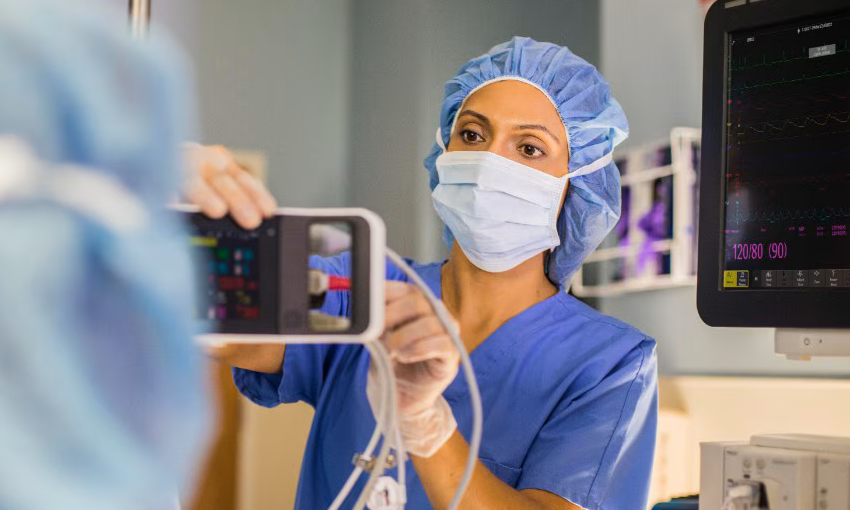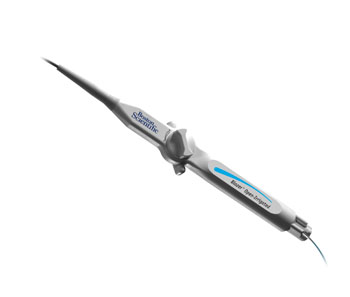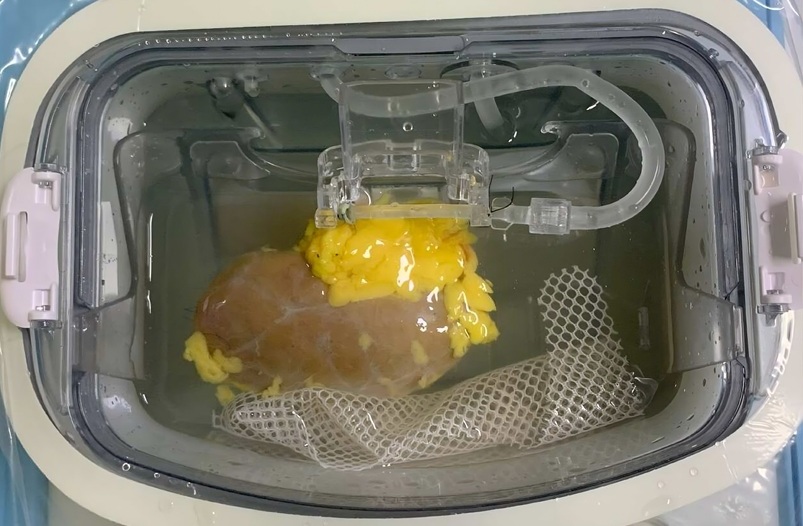Open-Irrigated Catheter Aids Treatment of Atrial Flutter 
|
By HospiMedica International staff writers Posted on 28 Mar 2016 |
A novel radiofrequency (RF) ablation catheter provides an elegant cooling platform for treating atrial flutter (AF), with robust handling capabilities.
The Blazer open-irrigated (OI) RF ablation catheter is indicated for cardiac electrophysiological mapping, delivering diagnostic pacing stimuli, and RF ablation of sustained or recurrent type 1 AF in adult patients. Contraindications include patients with an active systemic infection; those with a mechanical prosthetic heart valve; patients unable to receive heparin or an alternative anticoagulant; patients who have vena cava embolic protection filter devices; those who are hemodynamically unstable; and those who have myxoma or an intracardiac thrombus.
The ablation catheter features bidirectional steering, predictable trackability and torqueability, fine micromovement, and high tip stability and contact. A unique feature is Total Tip cooling, a technology to cool the catheter tip consistently during the procedure, thus improving the quality of the ablation lesion. The Blazer OI ablation catheter is intended for use with the Maestro 4000 RF Controller and the MetriQ irrigation pump, and is available with a range of tip curve styles, including standard, large, extra-long, and asymmetric. The Blazer OI ablation catheter is a product of Boston Scientific (Natick, MA, USA), and has been approved by the US Food and Drug Administration (FDA).
“The Blazer open-irrigated catheter is safe and effective for the ablation of atrial flutter," said Prof. Tom McElderry, MD, section chief of electrophysiology at the University of Alabama at Birmingham (UAB; USA), who participated in the BLOCk-CTI clinical trial of the device. “This newly approved ablation tool was built on the proven Blazer platform of therapeutic catheters and facilitates excellent maneuverability, consistent cooling, and stability during procedures.”
Cardiac ablation is a procedure that is used to correct structural problems in the heart by scarring or destroying tissue that triggers an abnormal heart rhythm, especially supraventricular tachyarrhythmias such as AF, atrial fibrillation, and atrial tachycardia. The low-risk procedure takes 2–4 hours and is most often performed in an electrophysiology or a cardiac catheterization lab. It is successful in about 90% of the people who have it.
Related Links:
Boston Scientific
The Blazer open-irrigated (OI) RF ablation catheter is indicated for cardiac electrophysiological mapping, delivering diagnostic pacing stimuli, and RF ablation of sustained or recurrent type 1 AF in adult patients. Contraindications include patients with an active systemic infection; those with a mechanical prosthetic heart valve; patients unable to receive heparin or an alternative anticoagulant; patients who have vena cava embolic protection filter devices; those who are hemodynamically unstable; and those who have myxoma or an intracardiac thrombus.
The ablation catheter features bidirectional steering, predictable trackability and torqueability, fine micromovement, and high tip stability and contact. A unique feature is Total Tip cooling, a technology to cool the catheter tip consistently during the procedure, thus improving the quality of the ablation lesion. The Blazer OI ablation catheter is intended for use with the Maestro 4000 RF Controller and the MetriQ irrigation pump, and is available with a range of tip curve styles, including standard, large, extra-long, and asymmetric. The Blazer OI ablation catheter is a product of Boston Scientific (Natick, MA, USA), and has been approved by the US Food and Drug Administration (FDA).
“The Blazer open-irrigated catheter is safe and effective for the ablation of atrial flutter," said Prof. Tom McElderry, MD, section chief of electrophysiology at the University of Alabama at Birmingham (UAB; USA), who participated in the BLOCk-CTI clinical trial of the device. “This newly approved ablation tool was built on the proven Blazer platform of therapeutic catheters and facilitates excellent maneuverability, consistent cooling, and stability during procedures.”
Cardiac ablation is a procedure that is used to correct structural problems in the heart by scarring or destroying tissue that triggers an abnormal heart rhythm, especially supraventricular tachyarrhythmias such as AF, atrial fibrillation, and atrial tachycardia. The low-risk procedure takes 2–4 hours and is most often performed in an electrophysiology or a cardiac catheterization lab. It is successful in about 90% of the people who have it.
Related Links:
Boston Scientific
Read the full article by registering today, it's FREE! 

Register now for FREE to HospiMedica.com and get access to news and events that shape the world of Hospital Medicine. 
- Free digital version edition of HospiMedica International sent by email on regular basis
- Free print version of HospiMedica International magazine (available only outside USA and Canada).
- Free and unlimited access to back issues of HospiMedica International in digital format
- Free HospiMedica International Newsletter sent every week containing the latest news
- Free breaking news sent via email
- Free access to Events Calendar
- Free access to LinkXpress new product services
- REGISTRATION IS FREE AND EASY!
Sign in: Registered website members
Sign in: Registered magazine subscribers
Latest Surgical Techniques News
- Minimally Invasive Endoscopic Surgery Improves Severe Stroke Outcomes
- Novel Glue Prevents Complications After Breast Cancer Surgery
- Breakthrough Brain Implant Enables Safer and More Precise Drug Delivery
- Bioadhesive Sponge Stops Uncontrolled Internal Bleeding During Surgery
- Revolutionary Nano Bone Material to Accelerate Surgery and Healing
- Superior Orthopedic Implants Combat Infections and Quicken Healing After Surgery
- Laser-Based Technique Eliminates Pancreatic Tumors While Protecting Healthy Tissue
- Surgical Treatment of Severe Carotid Artery Stenosis Benefits Blood-Brain Barrier
- Revolutionary Reusable Duodenoscope Introduces 68-Minute Sterilization
- World's First Transcatheter Smart Implant Monitors and Treats Congestion in Heart Failure
- Hybrid Endoscope Marks Breakthrough in Surgical Visualization
- Robot-Assisted Bronchoscope Diagnoses Tiniest and Hardest to Reach Lung Tumors
- Diamond-Titanium Device Paves Way for Smart Implants that Warn of Disease Progression
- 3D Printable Bio-Active Glass Could Serve as Bone Replacement Material
- Spider-Inspired Magnetic Soft Robots to Perform Minimally Invasive GI Tract Procedures
- Micro Imaging Device Paired with Endoscope Spots Cancers at Earlier Stage
Channels
Critical Care
view channel
Light-Based Technology to Measure Brain Blood Flow Could Diagnose Stroke and TBI
Monitoring blood flow in the brain is crucial for diagnosing and treating neurological conditions such as stroke, traumatic brain injury (TBI), and vascular dementia. However, current imaging methods like... Read more
AI Heart Attack Risk Assessment Tool Outperforms Existing Methods
For decades, doctors have relied on standardized scoring systems to assess patients with the most common type of heart attack—non-ST-elevation acute coronary syndrome (NSTE-ACS). The GRACE score, used... Read morePatient Care
view channel
Revolutionary Automatic IV-Line Flushing Device to Enhance Infusion Care
More than 80% of in-hospital patients receive intravenous (IV) therapy. Every dose of IV medicine delivered in a small volume (<250 mL) infusion bag should be followed by subsequent flushing to ensure... Read more
VR Training Tool Combats Contamination of Portable Medical Equipment
Healthcare-associated infections (HAIs) impact one in every 31 patients, cause nearly 100,000 deaths each year, and cost USD 28.4 billion in direct medical expenses. Notably, up to 75% of these infections... Read more
Portable Biosensor Platform to Reduce Hospital-Acquired Infections
Approximately 4 million patients in the European Union acquire healthcare-associated infections (HAIs) or nosocomial infections each year, with around 37,000 deaths directly resulting from these infections,... Read moreFirst-Of-Its-Kind Portable Germicidal Light Technology Disinfects High-Touch Clinical Surfaces in Seconds
Reducing healthcare-acquired infections (HAIs) remains a pressing issue within global healthcare systems. In the United States alone, 1.7 million patients contract HAIs annually, leading to approximately... Read moreHealth IT
view channel
Printable Molecule-Selective Nanoparticles Enable Mass Production of Wearable Biosensors
The future of medicine is likely to focus on the personalization of healthcare—understanding exactly what an individual requires and delivering the appropriate combination of nutrients, metabolites, and... Read moreBusiness
view channel
Philips and Masimo Partner to Advance Patient Monitoring Measurement Technologies
Royal Philips (Amsterdam, Netherlands) and Masimo (Irvine, California, USA) have renewed their multi-year strategic collaboration, combining Philips’ expertise in patient monitoring with Masimo’s noninvasive... Read more
B. Braun Acquires Digital Microsurgery Company True Digital Surgery
The high-end microsurgery market in neurosurgery, spine, and ENT is undergoing a significant transformation. Traditional analog microscopes are giving way to digital exoscopes, which provide improved visualization,... Read more
CMEF 2025 to Promote Holistic and High-Quality Development of Medical and Health Industry
The 92nd China International Medical Equipment Fair (CMEF 2025) Autumn Exhibition is scheduled to be held from September 26 to 29 at the China Import and Export Fair Complex (Canton Fair Complex) in Guangzhou.... Read more
















